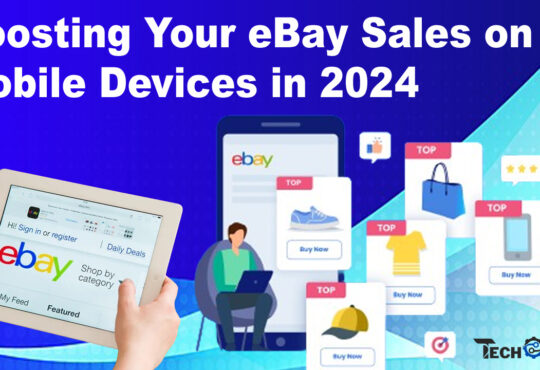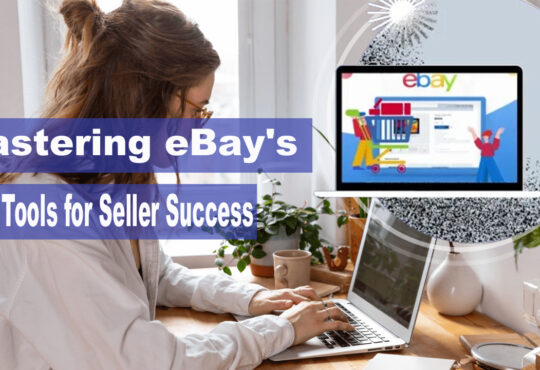Unlocking Success: A Guide to Shopify Dropshipping in the Current Market

In today’s speedy online business world, many budding entrepreneurs are drawn to the promising realm of Shopify dropshipping. What might sound like a complex term is essentially a straightforward way of running an online store without worrying about inventory or shipping. Shopify a user-friendly platform has become the go-to choice for individuals looking to dip their toes into the e-commerce waters. This guide aims to simplify the process of unlocking success in the current market through Shopify dropshipping offering step-by-step insights and strategies that are easy to understand and implement.
Dropshipping in its essence allows you to sell products without dealing with the hassles of stocking and shipping. Imagine having an online store where when someone buys a product it’s shipped directly from the supplier to the customer no need to handle physical goods. Shopify makes this process accessible even for those without extensive technical knowledge providing a simple and intuitive platform to set up and manage an online store. So if you’re eager to explore the world of online entrepreneurship with minimal risk and maximum potential this guide is your key to understanding and succeeding in Shopify dropshipping.
Table of Contents
What is Shopify Dropshipping?
Shopify dropshipping is a modern and simplified method of running an online store without the need to manage inventory or handle the complexities of product shipping. In traditional retail businesses would purchase and store products in advance taking on the risks of excess inventory or unsold items. However with Shopify dropshipping the store owner only purchases the product from a third-party supplier when a customer makes a purchase. The supplier then directly ships the product to the customer.
In simpler terms, as a Shopify drop shipper, you act as an intermediary between customers and suppliers. Your main focus is on creating and managing the online storefront marketing products and handling customer inquiries while the logistical aspects of inventory and shipping are taken care of by your chosen suppliers. This business model minimizes upfront costs and allows entrepreneurs to start an e-commerce venture with greater flexibility and reduced financial risks. Shopify a popular e-commerce platform facilitates the entire process making it accessible even to individuals without extensive technical expertise.
Why Shopify?
Shopify is a great choice for dropshipping because it’s easy to use even if you’re not a tech expert. The platform provides a simple and friendly interface for setting up and managing your online store which is perfect for new entrepreneurs. It connects smoothly with dropshipping tools like Oberlo and AliExpress making it easy to find products and handle order fulfillment without a lot of hassle. Shopify takes care of the technical stuff ensuring that your store is secure for both you and your customers. Plus you can make your store look just how you want it with customizable templates and the platform offers useful tools for marketing analytics and customer support. Whether you’re just starting or growing your business Shopify is a reliable and scalable choice that provides the support and features you need.
Pros of Shopify:
- Shopify is known for its user-friendly interface making it easy for beginners to set up and manage an online store without extensive technical knowledge.
- Shopify offers a variety of professionally designed templates allowing businesses to create visually appealing and customized storefronts.
- The platform supports multiple payment gateways providing flexibility for businesses to choose the payment methods that best suit their customers.
- Shopify’s App Store offers a plethora of apps and plugins to extend functionality enabling businesses to add features and capabilities to their online stores easily.
- Shopify prioritizes security ensuring that customer data and transactions are protected through SSL encryption and other security measures.
- Shopify scales well with growing businesses offering different plans and features to accommodate varying needs and sizes.
Cons of Shopify:
- While there’s a free trial ongoing monthly subscription fees can add up, especially for smaller businesses or startups on tight budgets.
- Unless using Shopify Payments additional transaction fees may apply which can impact overall costs for processing payments.
- While there’s flexibility deep customization might be challenging for businesses with specific design or functionality requirements.
- Some users may feel limited in terms of full control over their data since Shopify is a hosted platform.
- Shopify is a closed platform and migrating to a different platform may be more challenging compared to open-source alternatives.
- Selling internationally might incur additional fees impacting the overall cost of doing business in multiple countries.
Setting Up Your Shopify Store
Setting up your Shopify store is a straightforward process that begins with signing up for an account on the Shopify website. Once signed up choose a unique store name and domain and select a suitable Shopify plan. Customize your store by picking a theme that reflects your brand adding your logo and personalizing product descriptions. Set up payment gateways to accept customer payments and configure shipping preferences. Start adding products to your store ensuring clear images and detailed descriptions. Test your store’s functionality before launching to make sure everything works smoothly. Once satisfied launch your store and announce its opening to attract customers. Regularly monitor and adapt your store’s performance using Shopify’s analytics tools to make informed decisions as your business evolves.
All steps
- Visit the Shopify website and sign up for an account. You’ll need to provide some basic information about your business.
- Pick a unique and memorable name for your store. Shopify will also help you set up a domain name (the web address for your store) or you can connect an existing one.
- Shopify offers various plans with different features. Choose a plan that suits your business needs and budget. If you’re just starting the Basic Shopify plan is a good option.
- Use Shopify’s user-friendly interface to customize the look and feel of your store. Choose a theme that aligns with your brand and personalize it by adding your logo images and product descriptions.
- Configure payment gateways to accept customer payments. Shopify supports various payment options like credit cards and PayPal. Additionally set up your shipping preferences including shipping rates and regions you want to deliver to.
- Begin adding your products to the store. Include clear and appealing product images detailed descriptions and set the prices. If you’re dropshipping apps like Oberlo can help import products easily.
- Set up your tax settings based on your business location and the regions you sell to. Shopify can automatically calculate taxes for you.
- Before launching take advantage of Shopify’s test mode to ensure everything works smoothly. This includes testing the checkout process payment methods and any other functionalities.
- Once you’re satisfied with how everything looks and functions it’s time to launch your store. Announce your opening through social media or other channels to start attracting customers.
- Keep an eye on your store’s performance using Shopify’s analytics tools. Monitor sales customer behavior and other metrics to make informed decisions. Be ready to adapt and make improvements based on your insights.
By following these steps you’ll have a fully functional Shopify store ready to showcase your products and start attracting customers. Remember that the key to success is not only in the setup but also in ongoing optimization and adaptation to the changing needs of your business and customers.
Selecting Profitable Products
Choosing profitable products is a pivotal step in making your Shopify dropshipping venture successful. Start by understanding your chosen niche focusing on an area that aligns with your interests and expertise. Keep an eye on current trends within your niche looking for products that are in high demand or gaining popularity. It’s crucial to ensure that these products are readily available from reliable suppliers and consider shipping times to provide accurate delivery estimates to customers. Calculate potential profit margins for each product factoring in costs and expenses. Analyze competitor products to identify top-performing items and look for positive reviews and ratings to build trust with your audience. Additionally, diversify your product range to cater to a broader audience and stay informed about legalities and regulations related to the products you choose. Start with a selection of products test their performance and iterate based on results to optimize for profitability as your business evolves.
Managing Suppliers and Inventory
Effectively managing suppliers and inventory is a critical aspect of running a successful Shopify dropshipping business. Establishing reliable partnerships with trustworthy suppliers is key to ensuring product availability and timely order fulfillment. It’s essential to maintain clear communication with suppliers to address any potential issues promptly. Additionally efficient inventory management helps prevent overselling and ensures accurate tracking of stock levels. Regularly review your supplier agreements evaluating factors such as product quality shipping times and responsiveness. Utilize Shopify apps or tools that assist in monitoring inventory levels automating order processes and syncing data with your suppliers. By staying organized and proactive in managing your supply chain you can enhance customer satisfaction and maintain a smooth and reliable operation for your dropshipping business.
Handling Customer Service
Providing excellent customer service is a crucial aspect of running a successful Shopify dropshipping business. Timely and friendly communication is key to building trust and loyalty with your customers. Be responsive to inquiries addressing questions or concerns promptly and professionally. Communicate shipping times and policies to manage customer expectations effectively. Utilize Shopify’s customer service features such as automated order updates and tracking information to keep customers informed about their purchases. In case of any issues handle them with empathy and offer solutions that prioritize customer satisfaction. Implementing a user-friendly and accessible returns policy can further enhance the customer experience. By prioritizing customer service you not only address immediate concerns but also contribute to building a positive reputation for your dropshipping business.
Effective Marketing Techniques
To make your Shopify dropshipping business successful it’s important to use effective marketing techniques that attract customers. One simple yet powerful method is using social media. Platforms like Instagram and Facebook can help you reach a wider audience. Create engaging posts and share product photos to showcase what you offer. Another useful technique is influencer marketing. Partnering with social media influencers who align with your products can help you reach their followers and build trust. Additionally, optimize your store for search engines (SEO) by using relevant keywords in product descriptions and titles. This can make it easier for potential customers to find your store when searching online. Lastly, consider running promotions or discounts to encourage people to buy from your store. By using these straightforward marketing techniques you can increase the visibility of your Shopify dropshipping business and attract more customers.
Utilizing Shopify Apps and Tools
In Shopify dropshipping making the most of Shopify apps and tools is a game changer for your online store. These applications are like digital helpers that can significantly boost your business’s efficiency and overall performance. To start consider apps like Oberlo or Spocket for sourcing products effortlessly automating inventory updates and managing pricing. Marketing and SEO tools such as Kit and SEO Manager can assist in creating effective campaigns and improving your store’s visibility in search engines. Enhance customer service with apps like Zendesk or Tidio offering features like live chat support and automated responses. For email marketing, Klaviyo or Omnisend are handy tools to keep your customers engaged with newsletters and automated follow-up emails. Analytics tools like Google Analytics and Shopify’s built-in analytics help you understand your store’s performance. Streamline shipping with apps like ShipStation or EasyShip and encourage upselling with tools like Bold Upsell or Frequently Bought Together. By integrating these Shopify apps you can simplify tasks improve customer experience and ultimately increase the success of your dropshipping venture.
Staying Updated with E commerce Trends
Staying updated with e-commerce trends is crucial for the success of your Shopify dropshipping business. E-commerce is a dynamic field and understanding the latest trends can give your store a competitive edge. Keep an eye on emerging technologies such as augmented reality for product visualization or voice commerce and consider how these trends can enhance the shopping experience for your customers. Stay connected with industry news blogs and attend relevant webinars or conferences to gain insights into shifting consumer behaviors and preferences. Additionally, monitor social media platforms for discussions and feedback related to e-commerce trends. Regularly update your store’s design features and product offerings to align with the evolving expectations of your target audience. By staying informed and adapting to current trends you can ensure that your Shopify dropshipping business remains relevant and continues to thrive in the ever-changing e-commerce landscape.
Final Words
In closing our journey to Shopify dropshipping in today’s market it’s clear that success in this online business venture requires a blend of dedication adaptability and strategic choices. Shopify’s user-friendly platform empowers entrepreneurs to create and manage their online stores with ease. From setting up the store and selecting products to managing suppliers and implementing effective marketing we’ve explored key steps to unlock success.
Remember the heart of dropshipping lies in understanding your niche choosing profitable products and providing excellent customer service. Utilizing Shopify apps and tools can streamline your operations and enhance the overall shopping experience. Stay updated with e-commerce trends to ensure your store remains competitive and aligned with customer expectations.
As you embark on your Shopify dropshipping journey stay flexible and open to learning. Regularly assess your store’s performance adapt to market changes and never underestimate the impact of outstanding customer service. By following these guidelines you’re well-equipped to navigate the challenges and unlock the full potential of your dropshipping venture in the current market. Best of luck on your entrepreneurial journey!

Waqas Mushtaq is the founder of Tech Orage which is a prominent digital marketing agency based in Pakistan Since 2010.
He is a professional Freelancer who has completed successfully 400+ projects of website development & Digital Marketing (SEO – Google First Page Rankings).







